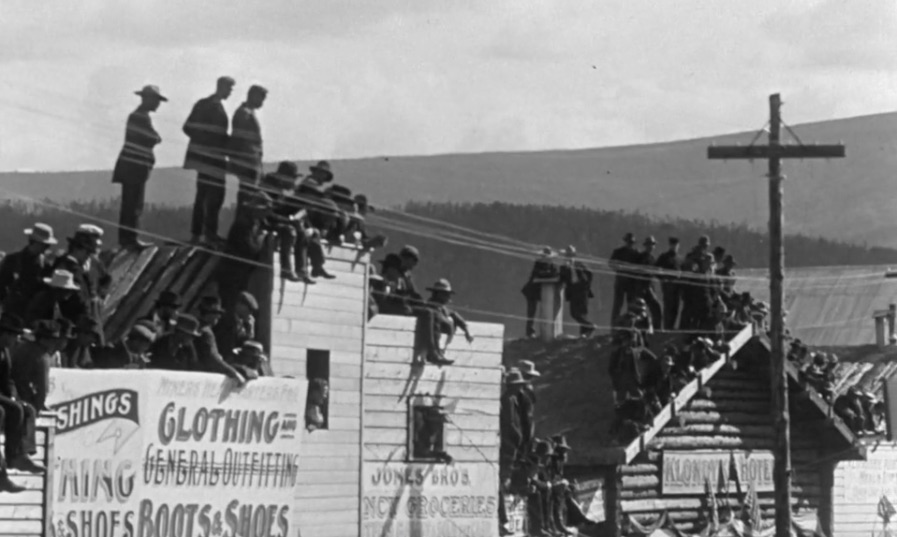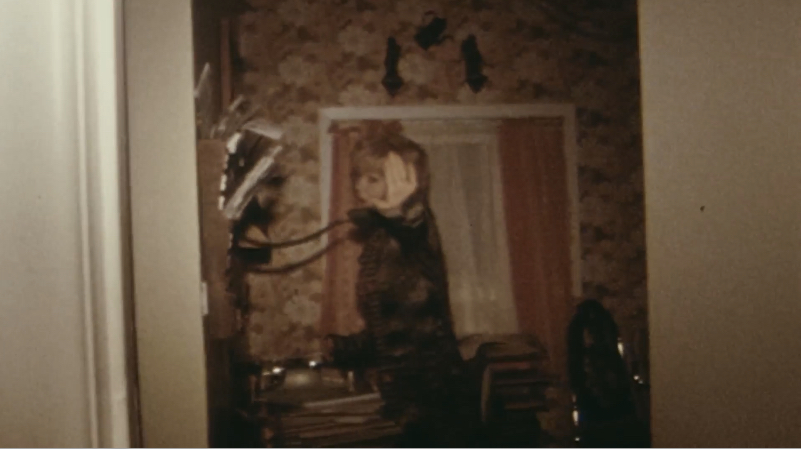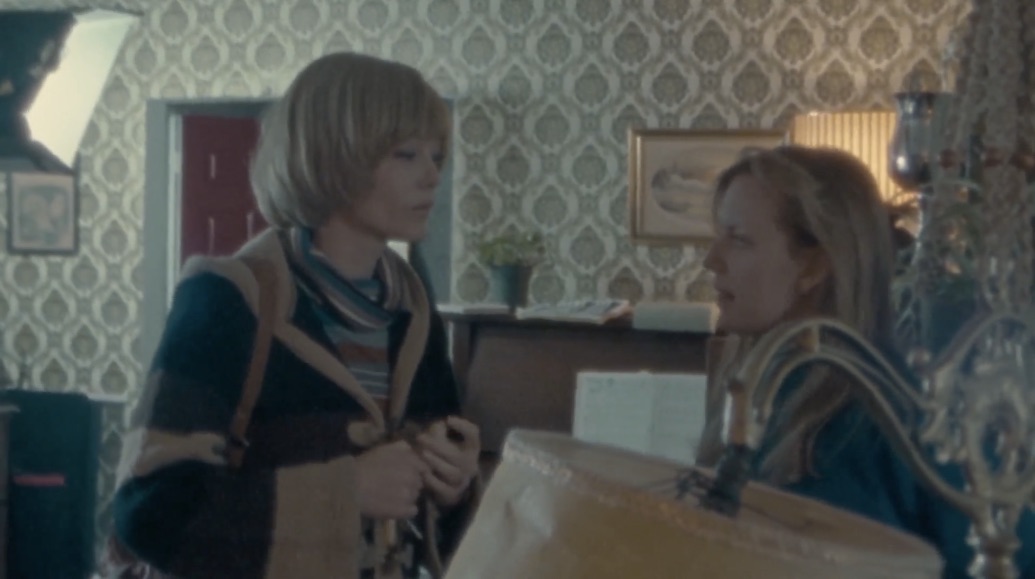At the recent ACA conference in Ottawa, I had the wonderful opportunity to host a screening of one of my favorite films - Sarah Polley’s 2012 documentary Stories We Tell. I’ve long been convinced that this film has a lot to say about archives. It’s a film fundamentally concerned with how we understand the past through the contradictions of memory and the opaque borders shared between memories and what has been recorded. The film weaves interviews and narratives with archival footage, documents and photographs into an engaging and emotional story that has so many layers, I find myself coming back to it again and again for inspiration and interest. And there is a fascinating twist that speaks in particular, I think, to archivists concerned with the boundaries of archives and how they are read and interpreted. If you haven’t seen the film, do so before reading further. Spoilers are imminent!
This event came out of a paper proposal I had submitted about Stories We Tell and Guy Maddin’s My Winnipeg in response to the ACA conference call for papers. The paper didn’t fit with the rest of the conference program, alas, but host committee member Jenna Smith suggested an even better idea: screening one of the movies as a conference event. The screening was held on June 8th at the beautiful Mayfair Theatre in Ottawa. The Mayfair is an independent, single-screen theatre and one of the last examples of such in Canada. It was a perfect venue for the film. All my thanks to the ACA host committee for setting this event up. I provided a bit of commentary and moderated the discussion, the notes from which I’ve edited below. You’ll find some interpolations based on the audience discussion in square brackets.
The detail that interests me most about Stories We Tell is the reveal that happens close to the end when Polley shows the process of filming the set recreated family scenes using a Super 8 camera and actors made up to look very convincingly like her family members. Up to that point, she hasn’t been exactly candid about what aspects of the film are originals, such as footage from family sources depicting her real mother, and what parts have been recreated to mimic them. The first time I saw it, I was totally taken aback. Particularly as a first-time viewer, you’re taken along something of an emotional rollercoaster with a number of surprises along the way. And while the archivist-minded part of me was questioning the source of all of this footage – I remember thinking, “how was all of this filmed? Where did it all come from?” – I willingly suspended my disbelief for a while because the film encourages you to do so. [I was surprised to find that a good portion of the audience watching the film for the first time shared this experience. I often think of myself as kind of gullible, but apparently there’s something about the film itself (and the clever trickery that Polley uses to convince the viewer) that makes it difficult to tell the originals from the recreations.]
I’d like to suggest that Polley is doing something particularly interesting here regarding the use of archival materials in films. To begin, I want to distinguish between three main ways, as I see it, of representing archives and archival records on film.
First, we’ve got the historic or dramatic recreation. This is the form we know best. It’s prevalent across lots of genres outside film, like in historic fiction. This is where archival research is used to inform dramatic events or characters’ actions. It gets the most explicit in the kind of TV true crime documentaries where it will say “dramatic reenactment” at the bottom of the screen just in case the audience doesn’t get it. These are performances that are based on archival records. Records informed them, but they are not directly visible.
Second, we’ve got records that are presented in film as records; as evidence. This is where the filmmaker shows a clip or a photo or the like and it connects with the narration. Again, we see this all the time. Ken Burns is the master of this approach. His documentaries are often made up entirely of records.

In this case, the filmmaker gathers and presents records to create a sense of performance. Ken Burns is famous for introducing motion into photographs in the classic zoom into photo to reveal some detail, an approach that is called the “Ken Burns effect.” He has a remarkable talent for making static things seem more active and alive in his films. In fact, he has cited a NFB film called City of Gold as one of his inspirations. And – not to distract too much from the main point – this film was inspired by a collection of gold rush photos held at LAC. We saw this approach as well in the ACA conference’s first morning keynote, where filmmaker Ali Kazimi used a unique motion-based photo montage approach to illustrate his film Continuous Journey.
Finally, there is something in between: what Sarah Polley is doing in Stories We Tell. She is recreating records in an imaginative way, but sticking within the boundaries of their archival qualities – their format and form – to lend them a sense of authenticity. The records are visible. But their form and format is the site of performance. These are performed records. And there’s a sense of trickery here to make it fairly difficult to distinguish between the originals and the recreated ones. It’s not entirely convincing to a critical eye, but it’s convincing enough to be fairly disorienting to the viewer. The film actually opens with one such recreated shot, so Polley is definitely priming the viewer to believe the authenticity of her recreations. And though I haven’t done the math, the recreations make up a fairly significant portion of the film.
So, what is Polley doing here? Well, on a basic level she’s able to fill out the narrative more. She is exploring the space between that which is recorded that that which is unknown, or known but unrecorded. And using recreated “archival” records to explore these boundaries. The interviews for the film were clearly made first, and sometimes the recreated records support the content of the interview; they make the claims seem more convincing. There’s a moment where one of her brothers talks about their mother’s hand – the hand waving “no!” – and the recreated version matches it.

A lot of the recreated records convey moments of sadness that the more happy-go-lucky travel family reels don’t. But Polley does respect their content in a way that influences their blending. The recreated versions are not overly dramatic, and the actors generally act in similar ways to the originals: hamming for the camera, aware of its presence, kind of exposed in the harsh white light that was mounted on the top of those cameras. In this way, the originals and the recreated versions complement each other and blend together. They both influence the narrative. The originals are just as easy to read into the story. Looking at expressions and events in them that seem to support one perspective or another, so it’s not merely a matter of adding to the narrative so much as exploring beyond the limits of the records that have been left behind. You’ll notice as well that Polley has shot a lot of the modern scenes in Super 8 too. This is how she keys a smart viewer to the fact that something is going on. But they don’t have the same effect because their content doesn’t match their form. They are not performed in the same way.
I think that Polley’s approach is intended to support some of the larger themes of the film. Just as she reveals the trick near the end, the narration notes the aspect of memory as having “shifts and fictions in them, mostly unintended.” And while her fictions are intended, they are all part of the slippery, difficult, and ultimately impossible problem of knowing her mother. Of getting close to the source and trying to understand the relationship between memory and truth, but seeing the source slipping away so one can “never touch bottom” as Harry notes in the film at one point. Polley’s approach speaks to how we read archival records. How quick we are to make a story by looking at documents and photographs collected together. And how easily such a story can be re-read, re-remembered and re-interpreted. [One audience member commented that she’d seen this movie once before, but that the re-watching added different layers of interpretation onto the film, a fact which seemed to support this idea at a meta-level!].
Secondly, there is the question of ethics and objectivity. Sarah Polley’s father Michael gets the closest to the heart of the film – more so than her biological father Harry – by questioning Sarah’s motivations. And by noting that her act of editing the film therefore makes it a product of her own views, rather than the objective work that contains the “whole picture,” as she says, that she might imagine she is creating. While Harry believes there is a truth to be found if one constructs the film in the right way (which he’d view as conforming to his version of the events), Michael understands that the exercise is less about finding some ultimate truth about Diane and more about the family’s various experiences trying to find her, to grieve her, and to remember and witness her life.
I can’t recall all of the wonderful points raised during the discussion that followed the screening because I was still a bit nervous up there. But there were some excellent ideas expressed in addition to the ones already inserted. Emily Lonie noted that she had actually seen the film before in the context of a book club, and a lot of the club’s members felt the film was narcissistic on the part of Polley, which I thought was interesting. I didn’t really feel this at all since the story is not really self-serving or demanding of sympathy. Though one of Polley’s sisters alludes to this potential reading in an early part of the film by wondering aloud why anyone would care about their family.
Others were interested in exploring whether there really was an ethical breach present in the film’s reconstructions. To at least one person in the audience, they didn’t seem nearly as transgressive as it did to me. I think their perspective was that the recreations were more in line with typical dramatic representations, and therefore not attempting to deceive the viewer. I disagree, but I digress.
I questioned the audience about the boundary between documentary and drama as well, particularly where the film is marketed as a documentary but is not necessarily as objective in its approach as is typical of the genre. I feel that Polley is exercising something of an ethical obligation through the “reveal” at the end where she is sitting in conversation with an uncanny duplicate of her mother.

She certainly wasn’t obligated to inform the audience of her trickery, necessarily. But in doing so, it positions Polley as possibly atoning for the process of making it. Not only for the trickery, but also for the subjectivity in its personal bias that Michael notes. The audience quite rightly noted the absence of Polley’s own voice from the film: she doesn’t reveal too much of herself or her own feelings in it and does not actively appear on camera. This absence mirrors the key absense of her mother from the film too. But where the mother haunts the film - either through the remaining archival records that document her life, or through her uncanny double - Sarah too haunts the film as its creator, commenting but never fully acknowledging her role in its making.
I was so glad for the great attendance and lively conversation that followed the screening. Thank you to everyone who came out!





